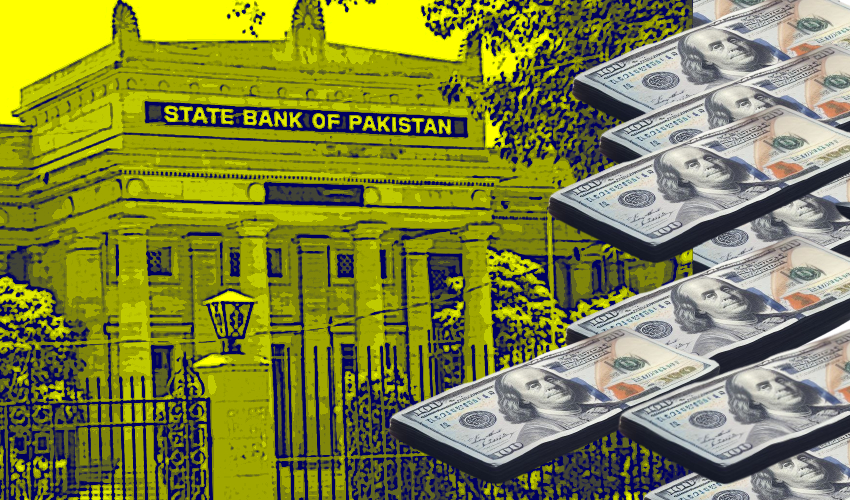IMF bailout package
Pakistani authorities in September managed to clinch a crucial $7 billion bailout package from the International Monetary Fund (IMF), which stood as a lifeline as it stabilized the country after a tumultuous period of financial instability.
Read here: IMF approves $7 billion loan for Pakistan
These 36 months covered three years of stringent preconditions, including painful economic reforms in terms of tax increments, energy price adjustments and subsidy cuts.
For the fiscal year 2025, the IMF projects that Pakistan's GDP growth would be at 3.2%, a modest but encouraging sign of recovery given the challenges. Though this is less than the target set by the government, it is still better than the projections coming from other international institutions.
World Bank and ADB reports
Both the World Bank and Asian Development Bank have upwardly revised their growth predictions for Pakistan for fiscal year 2025. The former increased its forecast from 2.3% to 2.8% due to eased import restrictions, reduced inflation, and improved business climate.
Likewise, the latter increased its growth prediction from 2.8% to 3%. The bank also believes inflation would reduce from 15% in 2024 to 10% in 2025.
These positive forecasts reflect the resilience of Pakistan's economy despite challenges that are still ongoing. The challenges include political instability and security concerns. Analysts say that as political stability improves, the economy will likely experience accelerated growth.
PSX's bullish run
One of the most striking developments of 2024 has been seen in the performance of Pakistan Stock Exchange (PSX). The PSX saw its first ever bullish trend, with the benchmark KSE-100 index reaching from 58,000 points to over 109,000 points by the end of December 2024. Such sudden spikes in stock market action clearly point towards a further improvement in investor sentiment on the stability of economic conditions.
With an increase in foreign exchange reserves to $12 billion from $7 billion, this certainly would raise confidence levels. Moreover, as of today, the reserves now are good for 2.5 months of imports; thus, in all probabilities, PSX's rise would be smooth for the coming years into 2025 with no surprises politically or economically.
Inflation and interest rates
By the end of 2024, it was evident that inflation had eased significantly from what it was plaguing Pakistan's economy in 2023. The national inflation rate was cut from a high of 29.2% in 2023 to 4.9% in 2024. Inflation in urban areas dropped sharply from 30.4% to 5.2%, while that in rural areas fell from 27.5% to 4.3%.
Similarly, the interest rate, which was at 22% in 2023, had been cut by 900 basis points to 13% by December 2024. This cut is likely to continue in 2025 and thus will bring some respite to consumers and businesses.
Even with these developments, the benefits of the reduced inflation have not reached the common man. The purchasing power of the population is still low, and the effects of inflation reduction have been felt unevenly.
Fiscal reforms and debt burden
Throughout 2024, the fiscal situation of Pakistan continued to be precarious, with increasing government debt obligations. During the year, the federal government debt increased by Rs6,631 billion, reaching Rs69,114 billion by October 2024, up from Rs62,483 billion in the previous year.
On the other hand, the tough decision-making on the part of the government, especially by the government through tax reforms is the backbone that has seen stability of the economy. All those important sectors of retail, wholesale, and agriculture have had their respective tax nets imposed. Economists may raise objections that this indeed increases the revenue, while the enforcement capacity of Federal Board of Revenue is far from effective.

Remittances and exports
Foreign reserves have improved sufficiently, from $7bn to $12bn; this is bound to stabilise the rupee by supporting import cover, while the reserves stand at two and a half months of imports. By June 2025, their coverage is bound to peak at three months of imports.
Remittances also witnessed a tremendous growth of 34.7% year-over-year. During July to October 2024, remittances surged from $8.79 billion to $11.84 billion, which would go a long way in meeting the foreign exchange needs of the country.
Exports also surged by 12.57% during July to November 2024, reaching $13.7 billion, another encouraging development for Pakistan's external sector.
While there were many encouraging signs, some industries struggled. Large-scale manufacturing declined, with production decreasing by 1.92% from July to October 2024 compared to a growth of 2.16% in the same period last year. This reflects the challenges in reviving industrial production in an environment of high inflation and interest rates.
Gold prices and commodity trends
The prices of gold also jumped during the year, increasing to Rs281,400 per tola in December 2024 from Rs219,200 in the year 2023. This has reflected inflationary pressures along with the quest for safe haven amid economic uncertainty.
A glimmer of hope as the economy slowly recovers, with expectations of greater political stability in the new government.
The country faces the dual challenge of political and economic stability into 2025. While the IMF's fiscal discipline has brought some level of stabilization, the growth pace remains slower than expected. The government remains optimistic that the tough reforms of 2024 will bear fruit in 2025, with projections for GDP growth to recover to around 3.2% despite the political and social instability that continues to affect the country.
There is hope that the economy of Pakistan will be back on track with growth if the reforms are continued and investment increases with better political stability.
However, economists highlight the need for sustained efforts in tax reform, improved manufacturing output, and enhancement of export growth to ensure that the gains of 2024 are not lost.
2024 was a year of painful reforms for Pakistan. The government had to make tough decisions on taxation, energy prices, and subsidies.
The economy is showing clear signs of recovery with improved inflation, remittances, and stock market performance, but the benefits of these changes have not reached the people.
As we look forward to 2025, the country needs to work through these challenges and ensure that the reforms of 2024 lead to broader economic stability and prosperity for the common man.


























